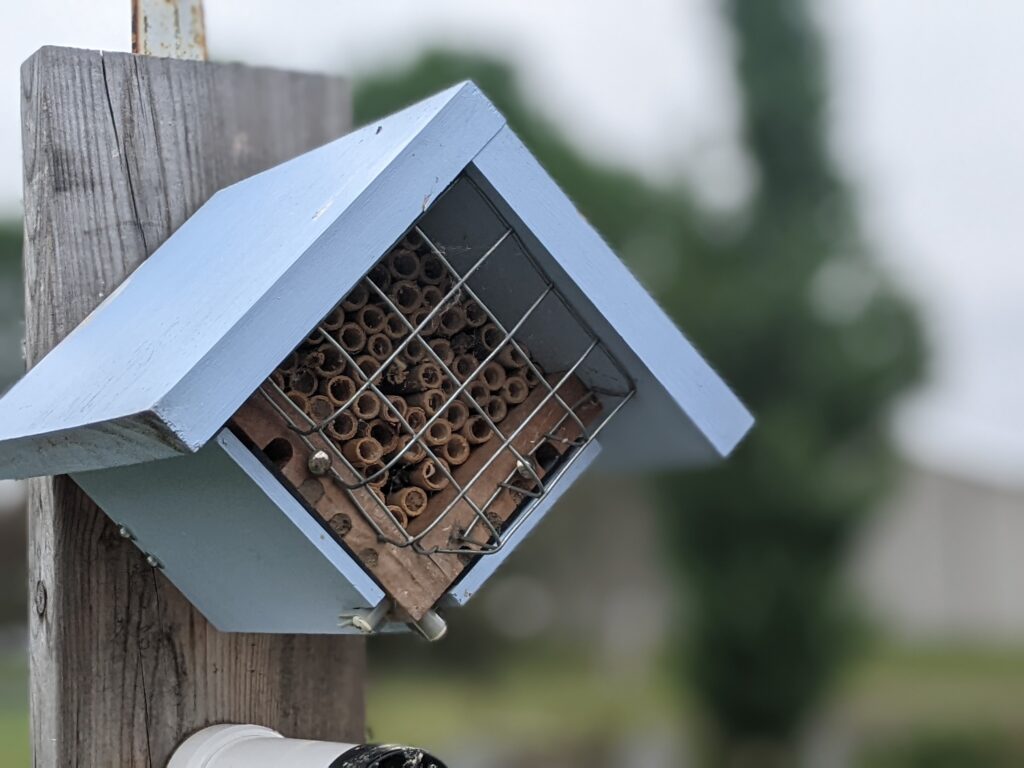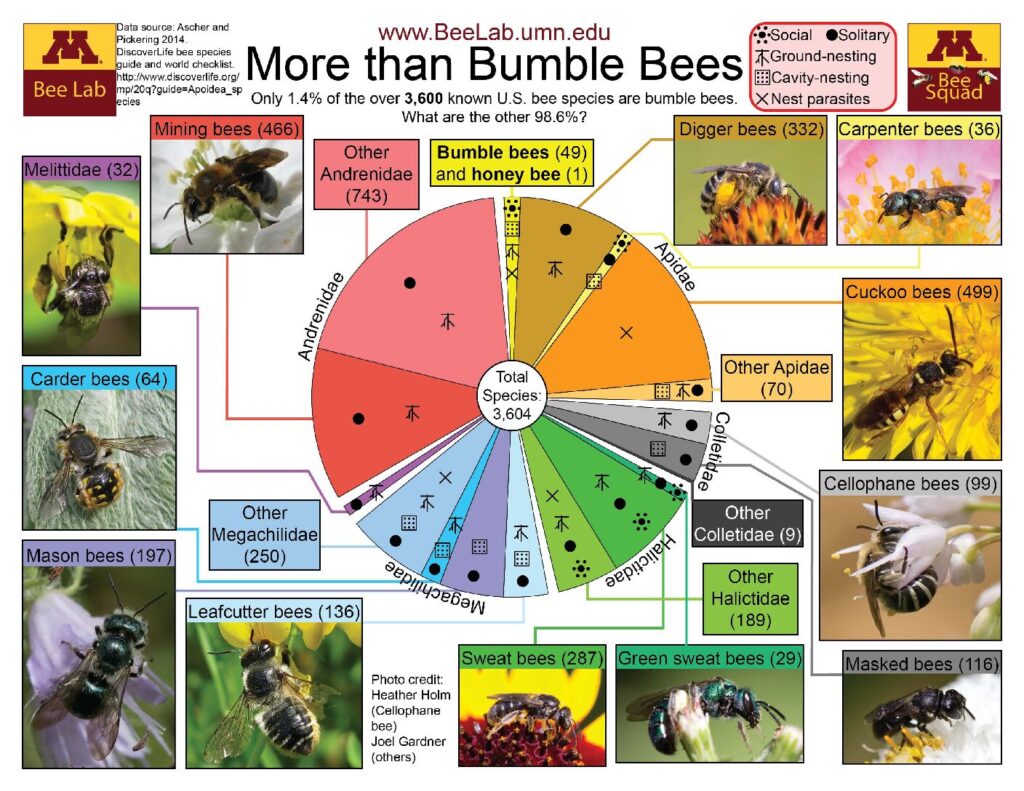Solitary Bee House

In Minnesota there are more than 460 types of native bees and they nest in a variety of spaces including underground, in decaying tree trunks and in bee houses. Bee houses are similar to bird houses but instead of attracting birds, they are made for solitary bees. Cavity-nesting solitary bees are looking for pre-made holes that are the right diameter and depth to nest in. If bees are provided a dry, secure house with the right sized nesting material — the bees might just decide to move in.
The wooden house has a painted overhang roof and stained sides to protect it from the elements. The interior of the house is made from natural lake reeds, as solitary bees seem to prefer the varying sizes and shapes of the reeds.
This specially designed Peek-a-Bee house provides a perfect home for solitary bees plus two viewing windows to watch and learn about solitary bees. Each viewing window has four different-sized channels to entice a variety of solitary bees. Gently open the door and watch the bees under the protective glass as they build their nests, gather food for their young and lay their eggs.
Solitary bees, including mason bees and leafcutter bees, are not aggressive since they don’t guard their nest like social bees. The male bees don’t have a stinger, and the female bees can sting but rarely do. Their sting is more like a mosquito bite than a typical bee sting. Bee houses are a great way to introduce kids to bees.
The Washington County Master Gardeners want to thank Bee to Bloom for donating and maintaining the bee house; for more information visit their website at: https://www.beetobloom.com/
More information about solitary nesting bees can be found at the University of Minnesota Bee Lab: https://beelab.umn.edu/Native-Bee/diversity .

